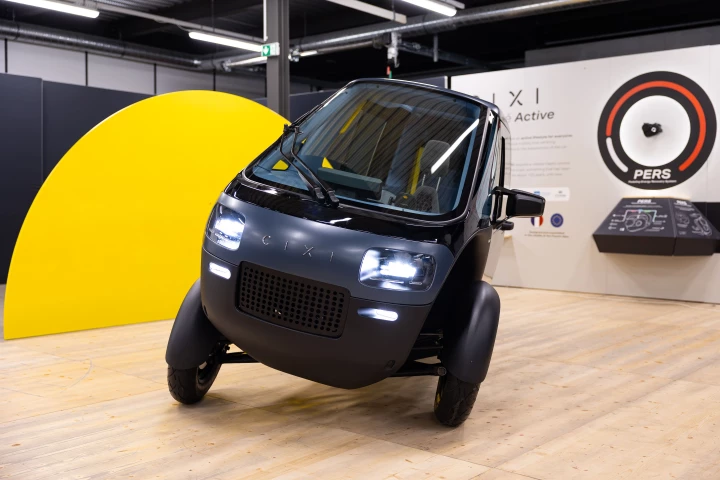When you think about it, telepresence robots are quite a neat idea. Not only do they allow you to see and converse with people in another location through video conferencing, but you can also move them about within that location - almost as if you were there in person, walking down the halls. Such devices typically don't come cheap, however. As with other robots, part of what you're paying for are their computerized "brains," along with all of their input/output peripherals. The Oculus Telepresence Robot, however, takes a different approach. It utilizes a user-supplied netbook to serve as its brains, eyes, ears and vocal cords. This results in a lower price, potentially opening up telepresence technology to people who otherwise wouldn't be able to afford it.
The Oculus itself is a motorized wheeled platform, with an adjustable ABS frame that can accommodate most netbooks or laptops with a screen size of no more than ten inches (although reportedly some 11-inchers will work, too). The computer's webcam needs to be centered above the screen, in order to line up with the platform's powered tilting periscope - this allows the operator to be able to look up, instead of just straight ahead or to either side.
While the netbook must be running Windows, the robot can be remotely controlled over the internet using any iOS or Android mobile device, or a PC, running the open source control software. Oculus' movements can be dictated using touchscreen controls, or a tilt-to-steer function. An onboard Arduino micro-controller relays commands from the netbook to the platform.
Using a typical laptop battery, approximately one to two hours of continuous driving and streaming should be possible. When it's time to recharge, the robot is able to automatically dock with its charging unit. It does so by targeting a graphic displayed on that charger, using the netbook's webcam.

Should users wish to press their Oculus into service as a night watchman, an optional dual-LED headlight is available. There's no word on whether or not it could also be equipped with a pepper spray gun, or a little mechanical arm that holds a baton.
Oculus was created by Canadian industrial designer Colin Adamson, who is currently in the process of raising funds to produce the product on a commercial scale. A pledge of US$225 will reserve one for you, which is $45 less than its planned retail price of $270.
The video below shows how the robot moves.







